Rocking the Mid-Day : The Life & Career of Pierre Robert of WMMR‑FM
For trade-radio professionals
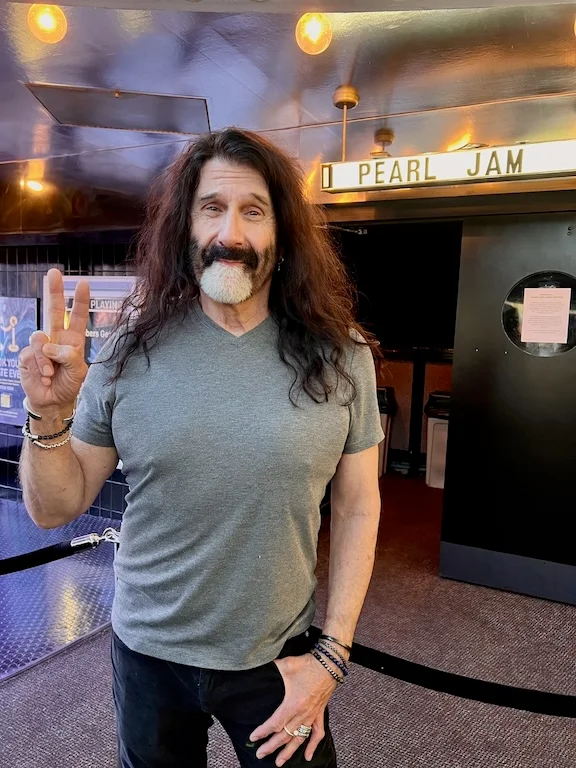
When one thinks of Philadelphia rock radio, one voice looms large: “Greetings, Citizens!” It belongs to Pierre Robert, the mid-day DJ whose tenure at WMMR spans over four decades and whose station persona has become part of the city’s sonic fabric. For professionals in radio broadcasting, programmers, talent coaches, operations executives, music directors, his story offers lessons in longevity, local connection, format fidelity and artist relations. This article examines his origins, his career arc, his relationships with artists and listeners, his co-workers and colleagues, the competitive environment, and the secret sauce behind staying relevant in a changing audio world.
From California to Philadelphia: Origins
Born August 1, 1955 in Truckee, California (near Lake Tahoe), Pierre Robert grew up in a motel-owning family. His early years included exposure to the 1960s rock culture of the West Coast. He made his way into radio via an internship and early on‐air shift at San Francisco’s legendary progressive station KSAN-FM (94.9) where the rock format was freer and more adventurous.
But when KSAN flipped to a country format in the early 1980s, Robert saw his opportunity heading east: “I drove across the country in my Volkswagen bus—Minerva—and landed in Philadelphia in 1981.” He arrived without a guaranteed job, living the radio dream solo. Humility marked the start: his first job at WMMR was in the music library and office at $3.50 an hour. A palm-reader on South Street told him, “You’re going to get a letter.” He got the letter from WMMR’s program director Joe Bonadonna, and that led to the hire.
For radio-professionals this early chapter suggests something important: talent doesn’t always arrive fully formed into a major market. Persistence, local connection, and a willingness to do the “behind the glass” grunt work pay off.
Building a Station Identity & Local Loyalty
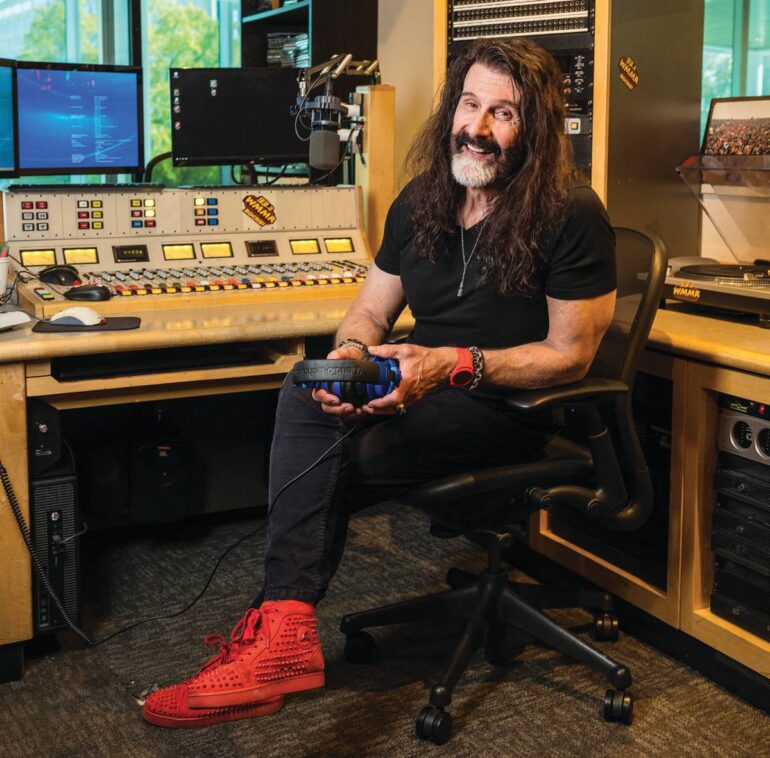
Building a Station Identity & Local Loyalty
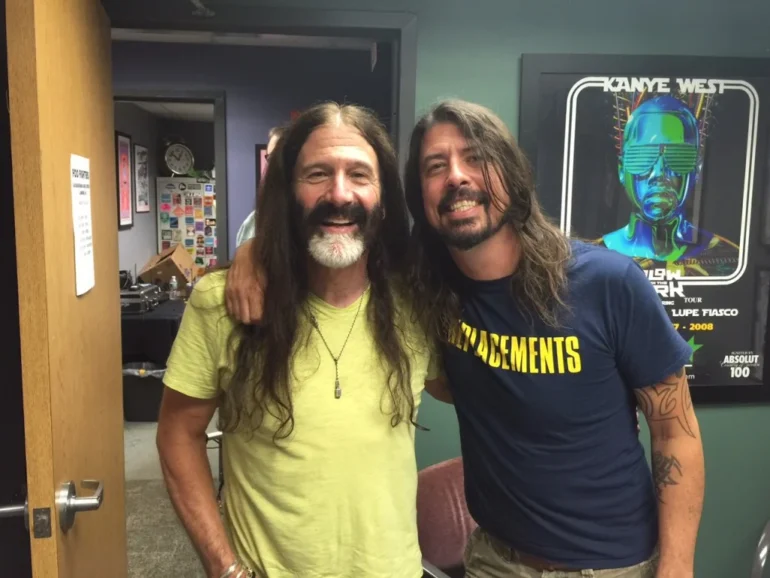
He introduced features that became station staples:
-
Pierre’s Planner — at ~11:20 a.m. listing birthdays, anniversaries, concerts and moments in rock history.
-
Work Force Blocks — themed blocks at noon, three songs by a particular artist requested by listeners.
-
Vinyl Cut — around 2:15 p.m., playing a track from the station’s vinyl archive.
These features leveraged the station’s credibility (extensive vinyl, deep rock heritage) while allowing Robert to reflect his personality: curious, eclectic, genuine. In the age of algorithmic playlists, the human voice and curation still mattered. As Robert himself said: “At ’MMR… there has always been extra freedom in varying degrees.”
For broadcasters: his case shows how consistent features build brand equity. A listener knows what to expect: the greeting, the planner, the blocks. Over time, these become rituals.
Artist Relations & the Rock Legends’ Welcome
Robert was more than a DJ; he was part of the live music ecosystem in Philadelphia. He attended thousands of concerts, introduced bands at local clubs, and over time earned the trust of rock artists. As an example, at a 2014 interview he welcomed one of the iconic guests of the station: Alice Cooper.
Philadelphia artists in particular forged bonds with him. His early enthusiasm for local band The Hooters helped cement his local credibility. In turn the station’s “Local Shots” and live in-studio performances made him a conduit between the community and the national rock scene.
One distinguishing trait: Robert didn’t treat artists as untouchable celebrities. He was genuine. One listener story (via WMMR’s tribute page) recounts when station producer Brent Porche shouted across a crowd at a free parking-lot concert: “You rock, Pierre!” Robert heard it, waded through the thousands, found Brent and thanked him personally. That anecdote illustrates his authenticity—something less common in radio personas.
For radio professionals: cultivating real relationships with artists (and being part of the live scene) pays dividends. DJs become more than voices—they become trusted voices in artist-ecosystems.
Local Competition, Coworkers & Station Culture
Within the Philadelphia market, WMMR faced competition from formats and stations that flirted with classic rock or hybrid formats. But Robert’s longevity came in part because he remained at one station. As he remarked: “My little claim to fame … is I’ve done what I’ve done all at one station.”
Coworkers have praised him. On his passing, the morning show hosts Preston & Steve called Robert “one of the true legendary rock DJs in the country today.” And the parent company Beasley Media Group called him “the heart and soul of WMMR.”
Within the station culture Robert helped anchor traditions: the live‐DJ stack, vinyl play, listener calls and requests. He kept presence even as technology changed. By 2021 his 40-year anniversary was celebrated and the studio at WMMR was renamed “The Pierre Robert Studio.”
On the competitive front, other stations might rely on automated formats, or music without personality. But Robert’s presence and the
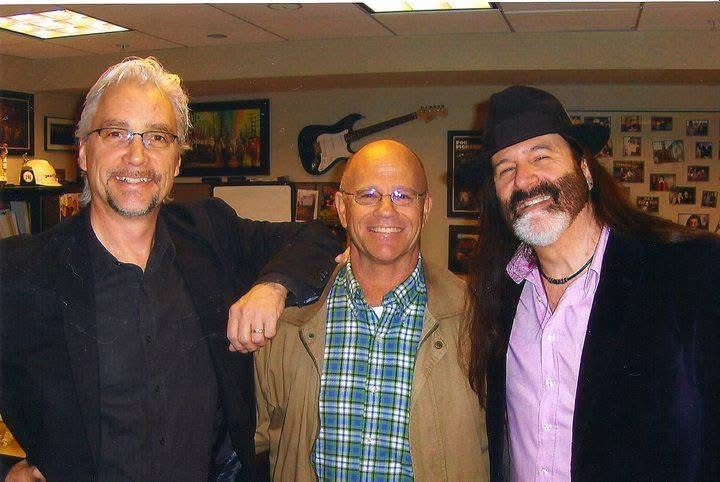
station’s commitment to a live mid-day shift distinguished WMMR in the market. As he said of the city: “If people in Philadelphia like you, and they believe you to be real, you got a shot.”
For broadcasters: that underscores how talent longevity often ties to station culture and local authenticity, not only market shifts.
Listener Stories & Community Connection
Robert’s signature “Greetings, Good Citizens” greeting and his consistent presence forged a listener community. One high-school student recounted how hearing his voice made them go into the school television studio and eventually choose a communications major. Another story: an older listener recollects hearing Robert’s voice on the dial on a Saturday afternoon with a cup of coffee, feeling part of a ritual.
Robert didn’t just play songs; he built rituals. He gave listeners a reason to tune in: morning coffee with him, remembering rock‐history moments, playing listener-dedicated blocks. And he affirmed the listener’s identity: “Good Citizens” aren’t simply receivers, they’re participants.
For professionals: broadcast loyalty is cultivated not only by songs or contests but by identity (you, the listener) and ritual (you tune in at this time, you recognize your block, you see yourself). Robert’s daily cadence built that.
Family, Personality & Human Side
Though Robert kept much of his personal life private, he did speak about his upbringing: his father was a lawyer who had a great vocabulary and storytelling skill, his mother a teacher. He credited them for his comfort telling stories on air. He lived in Gladwyne, a suburb of Philadelphia, having moved there around 1992 for tax reasons and because he found a 1950s-modern house that appealed to his design sense.
He brings a personal ethic to the mic: he has said that though he has “hit retirement age,” he is not finished working. He signed a multi-year contract extension in January 2024 to continue at WMMR for at least another four years.
Robert’s consistency in personality, authentic, music-driven, respectful of the listener, has kept him grounded. For station managers and program directors: talent that remains consistent in brand and personality across decades is rare, and when found, a station should lean into that.
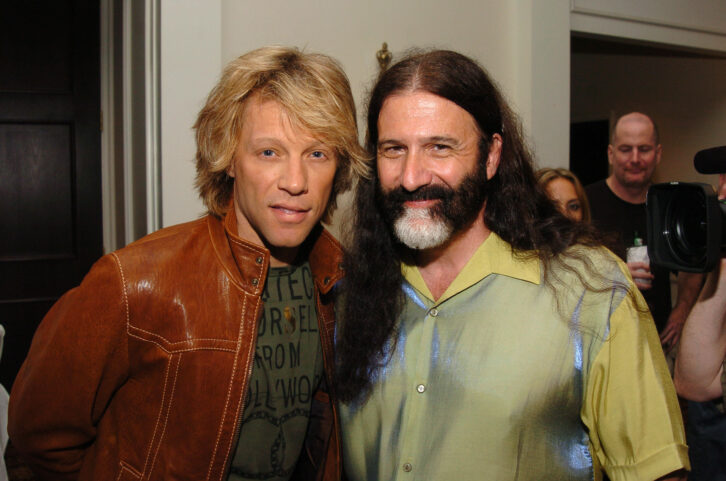
Memorable Moments & Milestones
-
November 2021 marked his 40th anniversary at WMMR. At that time he noted he had originally wanted to play “Cinnamon Girl” by Neil Young and Crazy Horse for his first on-air song but botched the cue by bumping the turntable, in front of four listeners.
-
In 2019 he was inducted into the Philadelphia Music Walk of Fame.
-
April 29, 2025 WMMR celebrated its 57th anniversary and Robert marked the event with archival IDs and station-history pieces.
-
On October 29, 2025, Pierre Robert passed away at the age of 70 (found at home; cause not yet disclosed).
Each milestone reinforced his role not just as a broadcaster, but as a community fixture.
Why Artists and Rock Legends Sought Pierre Out
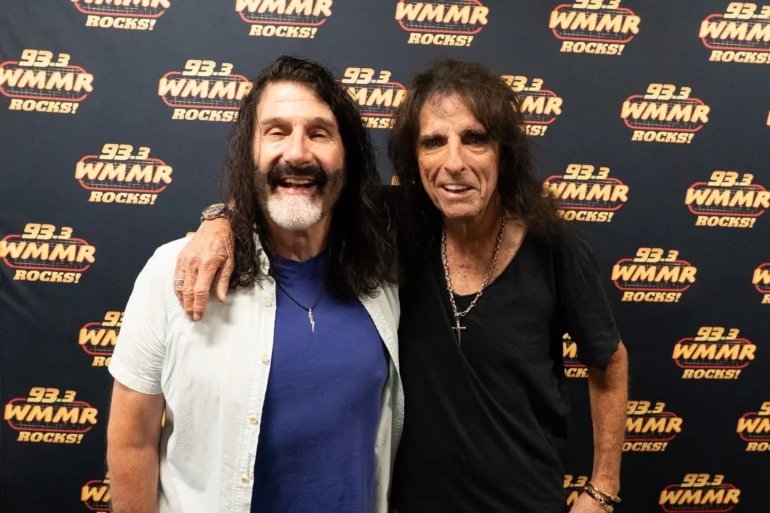
Artists often gravitate toward interviewers or DJs who genuinely care about their music, know their history, and treat conversation not as a promo but as conversation. Robert’s decade-long reputation of playing new and heritage rock, of being present at shows, of caring about listener requests, made him that kind of person. He championed local and national acts, embraced live performance, and fostered trust.
For example, at MMR’s annual rock-festival (MMRBQ), in 2024 Robert sat down with The Offspring’s guitarist Noodles for a backstage interview about their album Supercharged. When a musician expects not just to promote a song but to be heard as an artist, that DJ becomes someone they want to work with. That amplifies the station’s reputation for artist access.
For programming professionals: investing in the DJ-artist relationship (allocation of time, access, genuine curiosity) pays long-term dividends in exclusive content, station prestige, and stronger listener loyalty.
Challenges & Adaptations
Robert’s career spans the era of vinyl, cassette, CD, digital streaming, podcasting, algorithmic music. Yet his station features remained anchored: live DJ, listener interaction, deep cuts and music heritage. He resisted being entirely tied to playlist automation; he called out guns-and-roses refusal explicitly: after the Sept 2002 show in Philly where the band failed to appear, he stopped playing GNR on his show. It was a principled stance that resonated locally.
In 2022, WMMR’s overnight live-DJ block was cut when parent company Beasley made cost-savings. In such a climate, a veteran mid-day shift host like Robert became even more valuable as a station differentiator.
For radio operations: the takeaway is that in an era of cost pressures, talent with strong local brand equity becomes less expendable. But it also means the talent must continue evolving—Robert did digital social media (Instagram/Twitter), maintained live appearance schedule, stayed active at concerts.
Lessons for Radio Professionals
-
Stay local, stay real. Robert’s longevity results from being deeply embedded in his market—not flying in and out but living, participating and being a citizen of his city.
-
Build rituals. Features like the Planner, Work Force Blocks and Vinyl Cut create consistency and drive tune-in behavior.
-
Respect music heritage while embracing new work. Robert didn’t become “oldies only”; he continued to play new artists while anchoring the brand in rock history. Cultivate artist trust. Station access to artists matters in a streaming era. DJs who are known, trusted and present become content differentiators.
-
Own your block. Mid-day shifts often are low profile, but Robert turned mid-day into a brand (“Pierre Standard Time”).
-
Adapt but remain anchored. Technology changes, but human connection remains. Robert continued to engage live, attend shows, use social media, keep vinyl in his toolbox.
-
One station, deep reputation. Rather than hopping formats or stations, Robert’s longevity at WMMR built station-talent equity that newer hire-fires cannot replicate.
Final Thoughts

Pierre Robert’s career is a blueprint for how a radio personality can go beyond “voice on the air” to become a cultural fixture, a connector of artist and audience, a consistent presence in a market. For program directors and broadcast managers, his trajectory reminds that in an era of automation and cost pressures, the human element—authentic voice, daily ritual, local rootedness—still holds strategic value.
While his passing on October 29, 2025 marks the end of an era, his legacy at WMMR and in Philadelphia illustrates what happens when you treat every shift as your mission, every listener as a “Good Citizen,” and every song as part of a larger story. In the fast-moving world of radio, that kind of consistency is rare and powerful.
For all those in rock radio (and beyond) the question is: What parts of Robert’s approach can your own station translate? His career offers not nostalgia alone, but a living, actionable playbook for staying relevant, connected, and real.




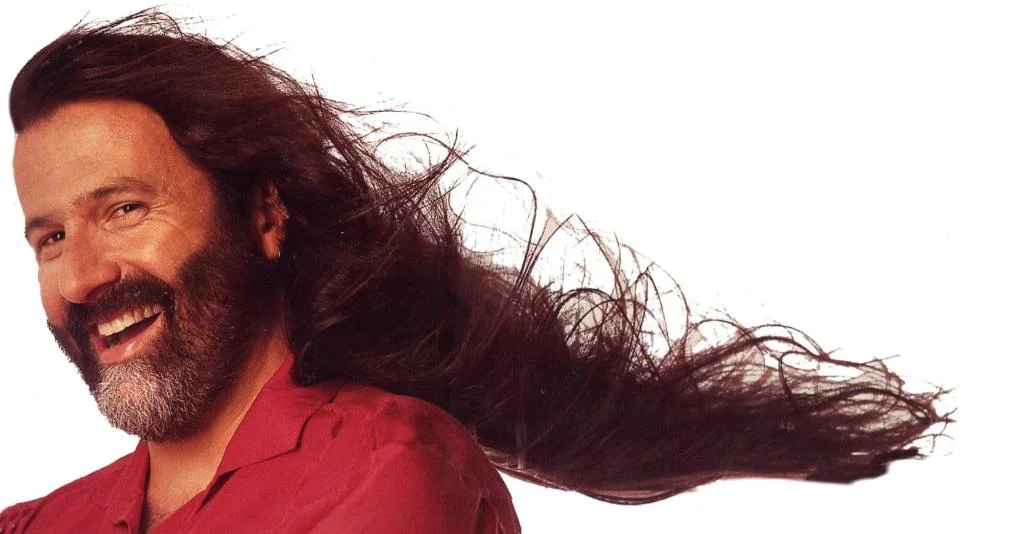

Post comments (0)